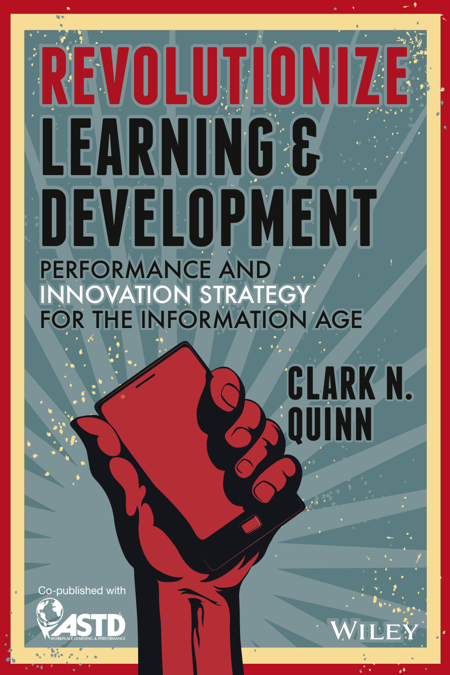I was reflecting on the two books I recently wrote about, Scaling Up and Changing the Game, versus the cultural approach of the Learning Organization I wrote about years ago (and refer to regularly). The thing is that both of the new books are about choosing either a very specific needed change, whether determined by fiat or based upon something already working well, whereas the earlier work identified general characteristics that make sense. And my thought was when does each make sense? More importantly, what is the role of Learning & Development (L&D; which really should be P&D or Performance & Development) in each?
If an organization is in need of a shakeup, so that a particular unit is underperforming, or a significant shift in the game has been signaled by new competition or a technology/policy/social change, the targeted change makes sense. As I suggested, some of the required elements from the more general approach are implicit or explicit, such as facilitating communication. The role here for L&D, then, is to support the training required for executives leading the shift in terms of communicating and behaving, as well as ongoing coaching. Similarly for the behaviors of employees, and watching for signs of resistance, in general facilitating the shift. However, the locus of responsibility is the executive team in charge of the needed change.
On the other hand, if the organization is being moderately successful, but isn’t optimized in terms of learning, there’s a case for a more general shift. If the culture doesn’t have the elements of a real learning organization – safe to share, valuing diversity, openness to new ideas, time for reflection – then there’s a case to be made for L&D to lead the charge on the change. Let’s be clear, it cannot be done without executive buy-in and leadership, but L&D can be the instigator in this case. L&D here sells the benefits of the change, supports leadership in execution both by training if necessary and coaching, and again coaches the change.
Regardless, L&D should be instigating this change within their own unit. It’s going to lead to a more effective L&D unit, and there’re the benefits of walking the walk as a predecessor to talking the talk.
Ultimately, L&D needs to understand effective culture and the mechanisms to culture change, as well as facilitating social learning, performance consulting, information architecture, resource design, and of course formal learning design. There’re new roles and new skillsets to be mastered on the path to being an effective and strategic contributor to the organization, but the alternative is extinction, eh?
